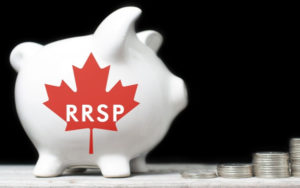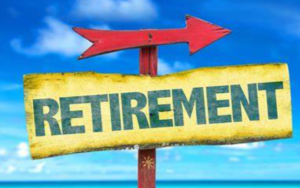How to set up your RESP

In my last article, I talked about the Registered Savings Education Program, or RESP for short, that allows you to save for your child’s post-secondary education with benefits from the government. In this post, I will cover how you can set up your RESP as it’s not as simple as just going to the bank.
There are three types of RESP to consider:
- Individual plans
- Family plans
- Group plans
All of these plans qualify for the 20% grant matching from the government and the Canada learning bond but what’s the difference between these plans?
Individual RESP
The individual plan has only one beneficiary on the account but it can be opened by anyone. This type is perfect for grandparents, relatives like aunts and uncles or family friends who want to contribute the plan as a gift. It is very simple and straightforward as you can easily see how much you have and keep track of the withdrawals when the child is in post secondary.
Family RESP
The family plan allows for multiple beneficiaries to be named on the account and must be all related by blood or by adoption. This is an ideal plan for those who have two or more children allowing you to easily manage one account instead of multiple individual accounts under the same family. When you contribute to the family plan, the contribution is split equally between the beneficiaries unless instructed otherwise. For example, Henry and Joanne are siblings and are both beneficiaries of the family RESP. If the parents are contributing $5,000 per year, $2500 will go to Henry and $2500 will go to Joanne. However, if Henry decides not to enroll in post-secondary, Henry’s portion of the grant can be transferred entirely to Joanne.
Both an individual or family plans are flexible where you can increase, decrease or stop contributions at any time. Both plans are offered by most financial institutions in Canada such as banks, insurance companies, credit unions, investment companies and more. As a result, there is a huge variety of investment choices from saving accounts, GIC, mutual funds, EFT to stock trading. Generally speaking, equity will perform better in the long run. However, unlike retirement or vacation which you can delay if the market is not performing well, there is an agenda to meet when it comes to education.
Here’s an example: Tom has been contributing to RESP for 18 years and suddenly at 18 years, there is a huge drop in the market similar to 2008, 2011 or 2020. His portfolio is down 30% this year and he still needs to take another 25% out of his RESP for his child’s first year of college. Unfortunately for Tom, he faces a double whammy.
Group RESP
Group plans, or also known as pool plans, are only offered by scholarship plan dealers only. In this plan, the scholarship plan dealers will pool all of the plan members’ money together and invest. Majority of the money is invested in a fixed income which typically provides a low risk steady return.
They are similar to the individual plan as only one child can be the beneficiary and the child does not have to be related by blood. However, group plans are locked investment with quite a bit of restrictions. Firstly, unlike the individual or family plan, a group plan does not have flexibility as you are committed to making regular payments towards the plan over a certain period of time. For example, you might need to contribute $2500 per year for the next 10 years and are required to fulfill that commitment. If for any reason you cannot commit and need to forfeit the plan, your investment earnings remain in the pool and may be distributed amongst remaining members so you could lose your original contributions. There is little flexibility in investment choices as well as you have no say in how it is being invested. This of this plan as a long term GIC. There are also membership fees or some plan providers will call this a sales charge because you actually start putting money into the investment, typically two to three years after the plan starts. If you can commit to their terms, you might be able to get the fees back at maturity depending on the plan carrier.
With all these restrictions, why do these plans exist and why would anyone choose it? Mainly because of its steady return. A large pool of money invested at a fixed income typically results in a higher return in comparison to an individual who is saving $2500 on their own. According to my own research, one group of RESP providers shared that the average rate of return for a 10 year timeframe is 4.6% back in 2008 and 2011 when the equity market was down 30%. Their group plan yields 5.2% and 7.3% which in the previous example would avoid Tom’s scenario.
Deciding the right plan for you
Here are a few questions you can ask yourself to help you determine with RESP is right for you:
- How much are you going to contribute to the plan?
- How does that contribution affect your current cash flow?
- Can you commit to that amount?
- What is your investment experience? Do you want to diversify how you are investing your RESP compared to your TFSA or RRSP?
- Who is managing your RESP investment? Is it someone you trust or a random agent waiting for you in the delivery room?
Always read the fine print and judge for yourself. There are fees associated with all types of plans but it should not scare you away from receiving thousands of dollars through government grants. Take some time to think about the questions above or talk to a professional on which plan will work best for you.
If you are interested in speaking with you about your situation, please contact me for a complimentary consultation. If you are interested in learning more about growing your financial wealth in Canada, please subscribe to my YouTube channel where I cover topics from taxes to RRSP to insurance.
Investing 101
Thomas Chan
Thomas C.Chan has been advising for over 10 years and has built a reputation for his approach in developing personal finance strategies, setting up risk management, and accumulating wealth for Canadians.
Subscribe to his YouTube channel where he shares his knowledge in helping you make the right financial decision when it comes to Retirement, Wealth, and Insurance.
Based in Richmond, BC, you also connect with him on Facebook or through email to book a complimentary consultation and uncover your financial potential.
In his spare time, Thomas enjoys playing recreational badminton and always welcome others to join him.
Website: Thomascchan.com
Youtube: www.youtube.com/thomascchan
Facebook: Thomas C Chan
Email: [email protected]








